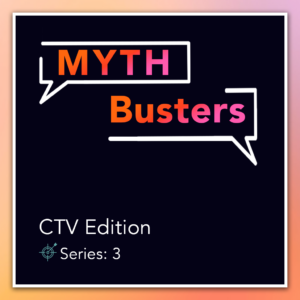CTV’s Extra Credit – How Content Metadata Can Change the Game

Authored by: Andrea Ravikumar, Alana Schept, Jill Patel, and Aileen Tobin, CTV Team Members at TripleLift
This is the third and final entry in TripleLift’s three-part CTV Myth Busters series!
Read more from Part 1 of the series – How Advertisers Can Stay on Top with the Expansion of CTV and Part 2 of the series – The Great Give Up – Are Marketers Ignoring fraud in CTV?
Fact or Fiction?: 0% of buyers are completely satisfied with their current CTV targeting solution.
FACT!
As the demand for quality CTV inventory grows, so does the demand for transparent and accurate targeting and reporting. Buyers cannot afford to waste their spend on unqualified audiences and are looking for new, easy-to-activate solutions that drive efficiency.
In a recent study with The Drum, TripleLift asked CTV buyers to rate their satisfaction with their current targeting capabilities. The results? Not a single buyer said they were 100% satisfied. In fact, 62% of buyers across linear, digital and programmatic teams said their targeting strategy has significant room for improvement.
So what steps can buyers take to improve campaign targeting and reporting? Well, it boils down to transparency, and transparency starts on the supply side. With that in mind, we’ve created a handy checklist to empower buyers to advocate for higher transparency with their supply partners to maximize their CTV campaigns.
Supply Partner Checklist:
- Does your supply partner implement pre- and post-bid fraud protection that scans all ad requests to uncover invalid traffic and prevent it from reaching advertisers?
- Does your supply partner engage third-party measurement, such as brand lift and sales lift studies, in addition to front-end metrics to track ROI and engagement within ad campaigns?
- Does your supply partner provide content metadata? In an ecosystem of hundreds of CTV providers, buyers need to have clarity about the programming their ads are running alongside.
An increasingly popular solution for transparency and targeting is content metadata, the descriptions or attributes of the content itself that are passed from the supplier to the SSP. In a recent customer survey, TripleLift found buyers rated the importance of leveraging content metadata as a 4.4 out of 5!
Getting In Your Prerequisites and Going Beyond Standard DSP Offerings
Since many DSPs don’t have robust content metadata targeting available in their UI, buyers should rely on supply partners to curate unique inventory packages and activate them in their DSP of choice. Content metadata often comes through the bid request in a way that’s too granular to report and target easily, so SSPs can take on the heavy lifting of sorting and cleaning up that data to turn it into a curated package that buyers can easily execute.
Making the Grade with Content Metadata
When it comes to brand safety, genre targeting is a great place to start. Genre targeting goes deeper than typical CTV contextual targeting by publisher and is an additional lever advertisers can pull to increase transparency and reach audiences more efficiently. If an advertiser prefers not to advertise in certain categories, such as politics, news, or children’s programming, TripleLift recommends using genre targeting to exclude those content categories from a campaign – something that a DSP cannot do. This is also extremely important and useful when activating FAST publishers who offer a wide variety of content types.
Another targeting parameter buyers can use to ensure brand safety is rating. The Content Ratings sent through the bid request follow the five MPAA rating categories: G, PG, PG-13, R, and NC-17. Since bid requests frequently include rating, advertisers can target a specific rating category.
As of October 2022, approximately 90% of bid requests are sent with genre attached, 60% with rating, and 40% with language. Buyers interested in targeting their campaigns towards these fields, like series, should work with their SSPs on a campaign-basis; publishers may be willing to share this additional data if they are properly compensated for it.
Going for Straight A’s with CTV Executed with Media + Data
Content metadata is quickly becoming a must-have for buyers. The targeting and reporting capabilities it provides lead to innovative and effective campaigns. Buyers cannot get left behind in this revolution and should be pressing their CTV supply partners on ways to leverage this data for more performant campaigns.
This concludes our 3-part CTV Myth Busters blog series! Keep an eye out for more CTV thought pieces coming from TripleLift soon.
Read more from Part 1 of the series – How Advertisers Can Stay on Top with the Expansion of CTV and Part 2 of the series – The Great Give Up – Are Marketers Ignoring fraud in CTV?
Sources: Moat QBR 2022, TripleLift Data, 2022
The post CTV’s Extra Credit – How Content Metadata Can Change the Game appeared first on TripleLift.

